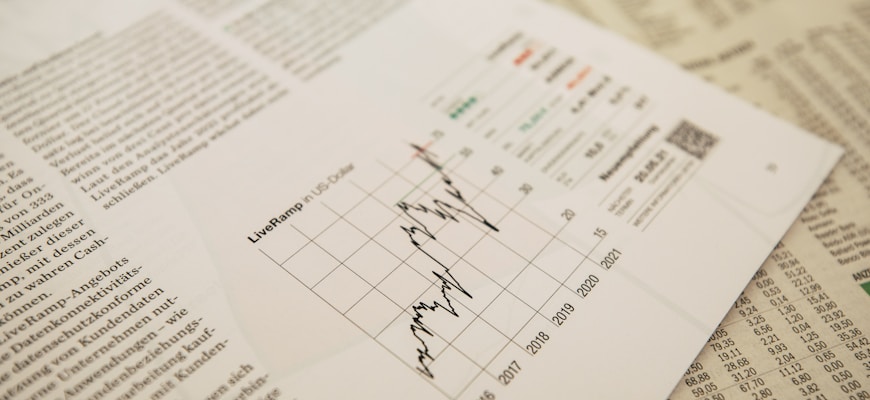How to Evaluate the Value of an NFT

- Understanding the basics of NFTs
- Factors to consider when evaluating an NFT
- Researching the creator of the NFT
- Determining the rarity and uniqueness of an NFT
- Assessing the demand for a particular NFT
- Setting a budget and investment strategy for NFT purchases
Understanding the basics of NFTs
NFTs, or non-fungible tokens, have gained significant popularity in recent years as a unique form of digital asset. Understanding the basics of NFTs is essential for evaluating their value accurately. NFTs are digital tokens that represent ownership of a unique item or piece of content, such as art, music, videos, or even virtual real estate. Unlike cryptocurrencies like Bitcoin or Ethereum, NFTs are indivisible and cannot be exchanged on a one-to-one basis. Each NFT is one-of-a-kind and cannot be replicated or replaced, making them valuable as collectibles or investments.
One key concept to grasp when evaluating the value of an NFT is scarcity. The scarcity of an NFT refers to how many copies or editions of the digital asset exist. The rarer an NFT is, the more valuable it is likely to be. Scarcity can be determined by factors such as the limited number of editions created, the popularity of the creator, or the uniqueness of the content. Additionally, the provenance or history of an NFT can also influence its value. NFTs that have been owned or endorsed by well-known artists or celebrities may command higher prices due to their association with a reputable source.
Another crucial aspect to consider when assessing the value of an NFT is the demand for the digital asset. The demand for an NFT can be influenced by various factors, including the popularity of the creator, the uniqueness of the content, or the current trends in the NFT market. NFTs that appeal to a wide audience or cater to niche interests may attract more buyers and command higher prices. Understanding the demand for an NFT can help you determine its potential value and make informed investment decisions in the digital asset space.
In conclusion, understanding the basics of NFTs is essential for evaluating the value of these digital assets accurately. Factors such as scarcity, provenance, and demand can all impact the value of an NFT and should be taken into consideration when assessing its worth. By familiarizing yourself with these key concepts, you can make more informed decisions when buying, selling, or investing in NFTs.
Factors to consider when evaluating an NFT
When evaluating the value of an NFT, there are several important factors to consider. One key factor is the rarity of the NFT. The more unique and scarce an NFT is, the more valuable it is likely to be. Scarcity can be determined by factors such as limited edition releases or the uniqueness of the digital asset itself.
Another important factor to consider is the demand for the NFT. If there is a high demand for a particular NFT, its value is likely to increase. Factors that can drive demand include the popularity of the creator, the relevance of the content, and the overall interest in the NFT marketplace.
Additionally, the provenance of an NFT can impact its value. Knowing the history of ownership and the authenticity of the digital asset can provide valuable insights into its worth. A well-documented provenance can increase the perceived value of an NFT and make it more attractive to potential buyers.
Furthermore, the utility of an NFT can influence its value. Some NFTs come with additional benefits or access rights, such as exclusive content or membership perks. These added utilities can enhance the overall value proposition of an NFT and make it more desirable to collectors.
Lastly, the overall market trends and sentiment towards NFTs should be taken into account when evaluating the value of a digital asset. Understanding the current state of the NFT market and how it is evolving can help determine the potential growth and longevity of an NFT’s value.
In conclusion, when assessing the value of an NFT, it is essential to consider factors such as rarity, demand, provenance, utility, and market trends. By carefully evaluating these factors, collectors and investors can make informed decisions about the worth of a particular NFT in the ever-changing digital art landscape.
Researching the creator of the NFT
When evaluating the value of an NFT, it is crucial to research the creator behind it. Understanding the background and reputation of the artist or developer can provide valuable insights into the potential worth of the NFT. By looking into the creator’s previous works, collaborations, and overall influence in the industry, you can gain a better understanding of the quality and uniqueness of the NFT.
Researching the creator of the NFT can also help you determine the authenticity and originality of the digital asset. By verifying the identity and track record of the creator, you can ensure that the NFT is not a copy or imitation. This verification process adds credibility to the NFT and can increase its perceived value in the eyes of collectors and investors.
In addition to researching the creator, it is essential to consider their reputation within the NFT community. Feedback and reviews from other collectors and experts can provide valuable insights into the creator’s standing in the industry. Positive feedback and a strong reputation can indicate that the NFT is more likely to hold its value over time.
Overall, researching the creator of an NFT is a critical step in evaluating its value. By delving into the creator’s background, reputation, and standing within the industry, you can make a more informed decision about the worth of the digital asset. This research can help you identify high-quality and authentic NFTs that have the potential to appreciate in value over time.
Determining the rarity and uniqueness of an NFT
Determining the rarity and uniqueness of an NFT is crucial when evaluating its value. One way to assess this is by looking at the scarcity of the NFT in question. The rarer an NFT is, the more valuable it tends to be. This can be determined by factors such as the total supply of the NFT, the number of editions available, and whether there are any special attributes that make it unique.
Another important aspect to consider is the provenance of the NFT. Knowing the history of an NFT can help determine its rarity and uniqueness. For example, if an NFT was created by a well-known artist or is part of a limited edition series, it is likely to be more valuable than one with a less prestigious background. Additionally, verifying the authenticity of an NFT can also add to its rarity and value.
Furthermore, the demand for an NFT plays a significant role in determining its rarity and uniqueness. If there is a high demand for a particular NFT, it is likely to be more valuable than one that is less sought after. Factors such as the popularity of the artist, the uniqueness of the NFT, and current trends in the market can all influence demand.
In conclusion, evaluating the rarity and uniqueness of an NFT is essential in determining its overall value. By considering factors such as scarcity, provenance, and demand, you can better assess the worth of an NFT in the ever-evolving digital art market.
Assessing the demand for a particular NFT
Assessing the demand for a specific NFT can be a crucial step in determining its overall value in the marketplace. One way to gauge demand is by researching similar NFTs that have been sold recently. By analyzing the prices these NFTs fetched, you can get a sense of what collectors are willing to pay for similar digital assets. Additionally, looking at the popularity of the artist or creator behind the NFT can also give you insight into potential demand. Social media presence, past sales history, and overall reputation can all play a role in determining how sought-after an NFT may be.
Another way to assess demand is by considering the current trends in the NFT market. Certain themes, styles, or types of NFTs may be more popular at different times, so staying up to date with what collectors are currently interested in can help you anticipate demand for a particular NFT. Additionally, paying attention to any upcoming events, collaborations, or announcements related to the NFT or its creator can also impact demand. By staying informed and being proactive in your research, you can better position yourself to evaluate the demand for a specific NFT accurately.
Furthermore, engaging with the community of collectors and enthusiasts can provide valuable insights into the demand for a particular NFT. By participating in forums, social media groups, or online discussions related to NFTs, you can gather feedback, opinions, and predictions from others in the space. This community-driven approach can help you get a sense of the overall sentiment towards a specific NFT and whether there is a growing interest or demand for it. Building relationships with other collectors and staying connected to the pulse of the NFT community can be a valuable asset in evaluating the demand for a particular digital asset.
Setting a budget and investment strategy for NFT purchases
When considering investing in NFTs, it is crucial to set a budget and develop an investment strategy to guide your purchases. This will help you manage your finances effectively and make informed decisions. One approach is to allocate a specific amount of money that you are willing to spend on NFTs, taking into account your overall financial situation and risk tolerance. By setting a budget, you can avoid overspending and minimize the potential impact on your financial well-being.
In addition to setting a budget, it is important to develop an investment strategy that aligns with your goals and objectives. This may involve researching different NFT projects, understanding the market trends, and diversifying your portfolio to reduce risk. Consider factors such as the reputation of the creator, the rarity of the NFT, and the demand in the market. By developing a clear investment strategy, you can make more informed decisions and increase your chances of success in the NFT space.
Ultimately, setting a budget and developing an investment strategy for NFT purchases can help you navigate the complex and volatile market. By approaching your investments with a clear plan in mind, you can mitigate risks and maximize the potential returns on your NFT portfolio. Remember to stay informed, stay disciplined, and stay focused on your long-term financial goals as you navigate the world of NFT investments.



